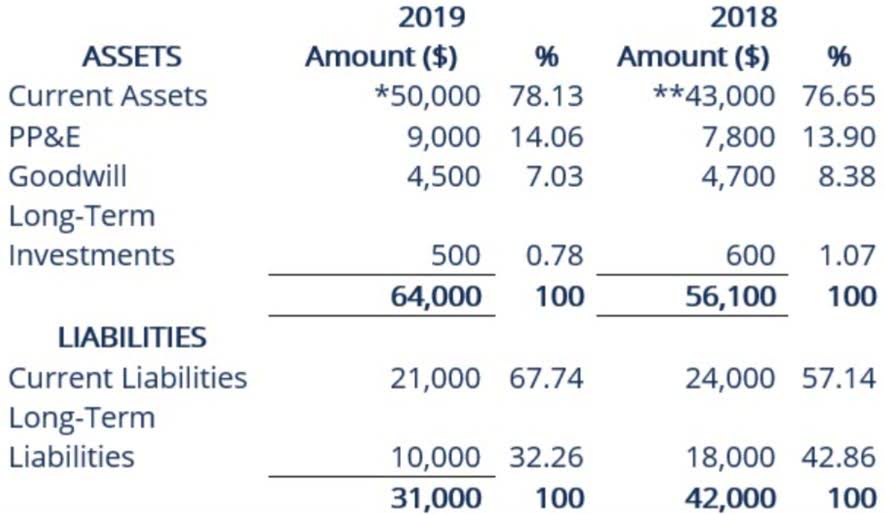
Because the check written for a payee has not yet been presented to the bank for clearance, the company’s funds will reflect a deduction, but the bank balance will remain unchanged. As a result, the company’s bank balance will show a more excellent balance than its actual amount of cash in hand. Once presented to the bank and cleared, the check transforms into obtainable cash. However, it may incur banking charges or take time to cash, establishing it as a monetary instrument that ensures payment after proper due diligence by the bank. Furthermore, if the payor’s account lacks sufficient funds, the check does not clear. Since the bank balance does not yet reflect the check amount, it can present a misleading picture of your actual financial situation.

What is your risk tolerance?
This process involves aligning your bank statement with your records to ensure accuracy. Outstanding checks can create discrepancies, complicating reconciliation. As businesses have to abide by the unclaimed property laws, any checks that have been outstanding for a long time must be remitted to the state as unclaimed property.
- For the past 52 years, Harold Averkamp (CPA, MBA) hasworked as an accounting supervisor, manager, consultant, university instructor, and innovator in teaching accounting online.
- The payment goes on the general ledger, but businesses must make adjustments during reconciliation, and they may need to reissue stale checks.
- One part of check writing that can take some practice is the handling of an outstanding check.
- By being proactive and diligent in tracking all spending, you will have a better idea of your overall financial health and can make more suitable plans for the future.
Treatment of Unpresented Checks in Bank Reconciliation Statement FAQs
When the check reaches this expiration date, it is no longer valid, and the bank the check was written from may not honor the payment. Even if this policy isn’t written on the check, most banks have policies around check expiration. Ask the check’s originating bank if you’re unsure of how long you have to cash or deposit a check. The payee has the responsibility to negotiate the check, either by taking it to their bank and cashing it or depositing it in an ATM or other service location, or depositing it through a mobile banking app on their phone.
Ways to Avoid Outstanding Checks?
- After that, there are a few more steps you can take to track down an old check.
- Our team of reviewers are established professionals with decades of experience in areas of personal finance and hold many advanced degrees and certifications.
- Putting a stop payment on a misplaced or stale check may prevent issues down the road, especially if there’s a concern that it could fall into the wrong hands.
- On the same day, a check of $7,000 is issued to a creditor, Mr. John, who presents the check to his bank on 2 February 2019.
- Also, outstanding checks may prove a hassle for an otherwise careful consumer.
- By implementing these practices, businesses can effectively manage outstanding checks and maintain accurate cash flow records.
If you forget about the outstanding check and spend money based on the present bank balance, it can lead to financial miscalculations. This documentation will come in handy if you need to prove to state regulators that you made reasonable attempts to complete the payment. If an outstanding check is cashed after you asked a bank to stop the payment, you will be responsible for proving that you took the necessary steps to complete the payment. If the check is older than six months, the check may be stale or void. If it is voided, you still need to put a stop payment request on the check. This prevents someone from trying to cash or deposit it and possibly having it affect your account balance.

Also, always maintain in communication with payees about payments not fully processed. Outstanding checks are typically recorded in a company’s cash disbursement journal or check register. The check register includes details such as the check number, date of issuance, payee, and the amount of the check. By maintaining an organized and up-to-date check register, companies can easily identify outstanding checks and reconcile them with the bank statement. In addition to timing differences, outstanding checks can also arise from errors, such as when a check is lost or misplaced before it can be deposited. Other reasons include delays in the mail system, clerical errors, or discrepancies between outstanding check definition the company’s records and the bank’s records.


Provided you maintain vigilance and embrace technology, you can handle outstanding checks with ease. You can also call or write to remind the payee that the check is outstanding. If they haven’t received the payment, this may nudge them to notify you to reissue the check. Outstanding checks also have the risk of being used in fraudulent conduct.

Ask a Financial Professional Any Question
Make sure that payees have access to the right contact information so that they can get in touch with you or your designated representative regarding any questions, issues, or changes relating to the overdue check. Check to see that the contact information is correct, as checks may go missing simply because of an incorrect mailing address. This team of experts helps Finance Strategists maintain the highest level of accuracy and professionalism possible. The bank will only debit the depositor’s account when the check is presented to it, and this will be paid by the bank. My Accounting Course is a world-class educational resource developed by experts to simplify accounting, finance, & investment analysis https://www.bookstime.com/ topics, so students and professionals can learn and propel their careers.
- You can also commit to growing your financial literacy by learning about more topics around bank accounts and payment.
- To reconcile outstanding checks with your bank statement, compare the checks issued but not yet cleared with the information provided on the statement, ensuring that both records align.
- However, till the expiry date of the check, it remains a liability to the check issuer.
- The payee has the responsibility to negotiate the check, either by taking it to their bank and cashing it or depositing it in an ATM or other service location, or depositing it through a mobile banking app on their phone.
- The payor must be sure to keep enough money in the account to cover the amount of the outstanding check until it is cashed, which could take weeks or sometimes even months.
- In that case, the payor must immediately inform its bank to stop the payment of a check.
Why You Can Trust Finance Strategists
Therefore, rather than allowing checks to become stale and then remitting the amounts to a state government, companies should contact the payees of any checks that have been outstanding for several months. An outstanding check is a check that a company has issued and recorded in its general ledger accounts, but the check has not yet cleared the bank account on which it is drawn. This means that the bank balance will be greater than the company’s true amount of cash. On the payee side, outstanding checks create a risk of expiring or becoming bookkeeping “stale.” When this happens, the check can’t be cashed or deposited, and the payment must be reissued or made another way.